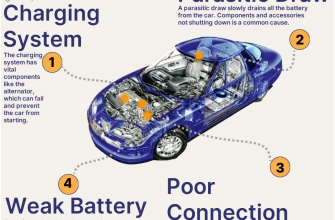When it comes to vehicle suspension systems, the term “camber” is often thrown around, yet many drivers remain unaware of its significance and implications. Among the various types of camber, negative camber has garnered attention for its impact on vehicle handling and performance. In this article, we will delve into the intricacies of negative camber, its benefits, and its considerations for both everyday drivers and motorsport enthusiasts alike.
What is Camber?
Camber refers to the angle of the wheels in relation to the vertical axis when viewed from the front of the vehicle. It can be classified into three main types:
- Positive Camber: The top of the wheel tilts outward from the vehicle.
- Negative Camber: The top of the wheel tilts inward towards the vehicle.
- Zero Camber: The wheel is perfectly vertical.
While zero camber is ideal for straight-line stability, negative camber is often preferred for enhanced cornering performance;
The Mechanics of Negative Camber
Negative camber occurs when the top of the tire is angled inward relative to the vehicle’s body. This adjustment can be achieved through various means, including adjustable suspension components, aftermarket camber kits, or simply modifying the vehicle’s alignment settings. The angle of negative camber is typically measured in degrees, with common settings ranging from -1 to -3 degrees for performance applications.
Benefits of Negative Camber
Negative camber provides several benefits, particularly in performance-driven vehicles:
- Improved Cornering Grip: As the vehicle leans into a turn, negative camber helps maintain tire contact with the road, enhancing grip and stability. This is vital for high-speed cornering, where the forces acting on the tires are significant.
- Reduced Understeer: By maximizing the contact patch during cornering, negative camber can help reduce understeer, allowing drivers to maintain better control.
- Enhanced Steering Response: Vehicles with negative camber often exhibit sharper steering responses, making them more agile and fun to drive.
Considerations and Drawbacks
Despite its advantages, negative camber is not without its drawbacks. Here are some considerations to keep in mind:
- Tire Wear: One of the most significant trade-offs of negative camber is accelerated tire wear. The inner edge of the tire may wear down faster than the outer edge, necessitating more frequent replacements.
- Reduced Straight-Line Stability: While negative camber excels in corners, it can compromise straight-line stability, especially at high speeds. This can lead to a less comfortable ride on the highway.
- Alignment Sensitivity: Vehicles with negative camber may be more sensitive to alignment changes, requiring more frequent adjustments to maintain optimal handling.
Negative camber can be a game-changer for those seeking to enhance their vehicle’s performance, particularly in motorsport and spirited driving scenarios. While it offers significant benefits in terms of cornering grip and steering response, the trade-offs in tire wear and straight-line stability warrant careful consideration.
Ultimately, whether you’re a casual driver or a dedicated motorsport enthusiast, understanding the nuances of negative camber can help you make informed decisions about your vehicle’s suspension setup. As with any modification, it’s advisable to consult with a professional to achieve the perfect balance tailored to your driving needs.










As a motorsport enthusiast, I appreciate the depth of information provided here. Negative camber really does make a difference on the track!
Fantastic read! Understanding negative camber has given me new appreciation for vehicle dynamics and handling capabilities.
I never realized how important camber angles are for performance driving. The benefits of negative camber are fascinating!
I love how this article breaks down complex topics into digestible pieces. Negative camber is definitely something I want to learn more about!
This article is a must-read for anyone interested in car performance. The section on cornering grip was particularly enlightening.
Great insights into vehicle suspension! The mechanics behind negative camber were explained in an easy-to-understand way.
This article provides a clear and concise explanation of negative camber. I learned so much about how it affects handling!